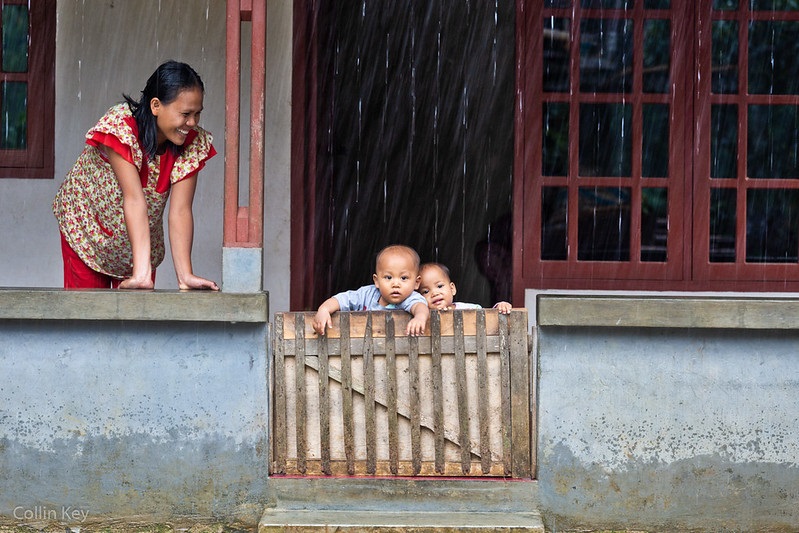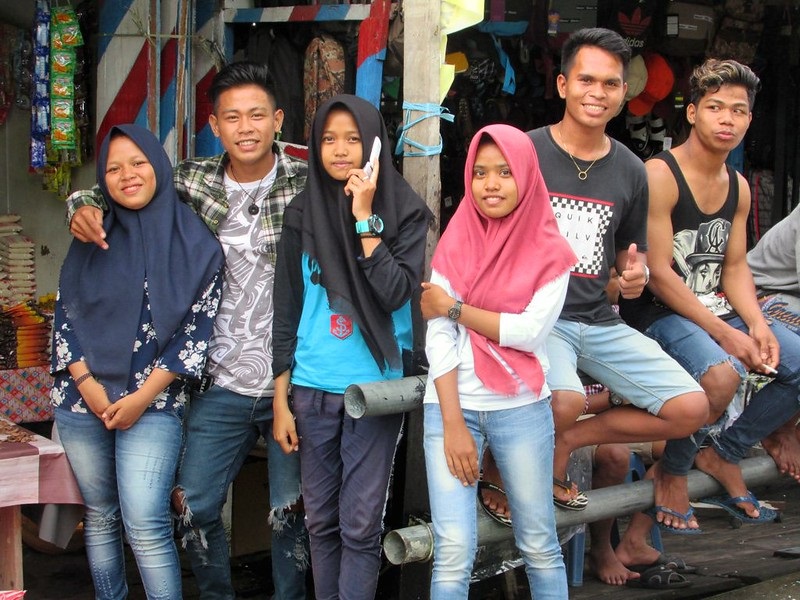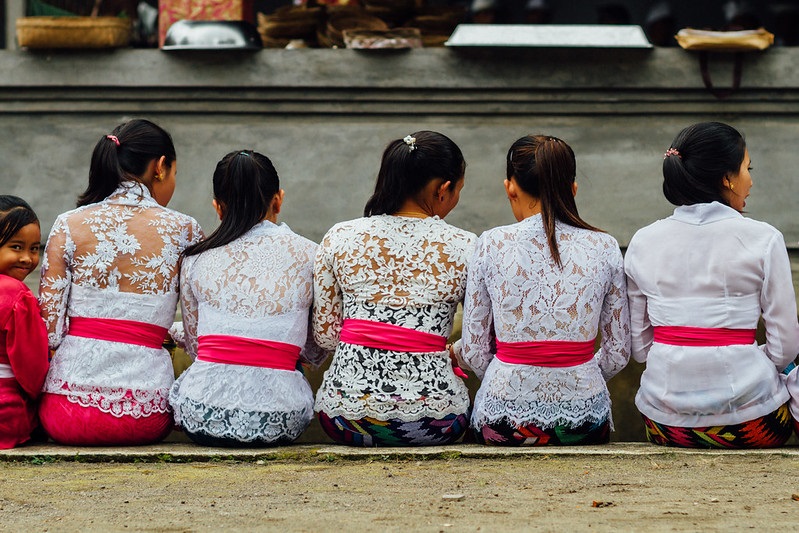Louisa-Anne Buwalda
Indonesia is arguably a socially conservative nation. One area, however, where it seems to defy convention is in family planning. Family planning across Indonesia is a topic that is discussed with such matter-of-factness that it may make foreigners blush. The private realm has become public as a matter of state policy with one of the most comprehensive and successful family planning programs in the world. Across Indonesia the family planning movement even has its own mantra: dua anak cukup, or two children is enough.
Easy access to safe contraception methods is widely recognised as a critical health need for women around the world. The increase of women accessing contraceptive methods in developing countries has seen maternal deaths fall by forty per cent over the last twenty years. As such, the continued, easy availability of contraceptive methods is vital for ensuring high levels of reproductive and maternal health for women, not just in Indonesia, but also around the world.
World Bank data shows that Indonesia’s population of around 264 million is growing at around 1.1 per cent annually and trending downwards. This rate of slow steady growth is arguably owes much to the national family planning program administered by the National Population and Family Planning Board (BKKBN), which provides contraceptive access and family planning services.
Slowing the birth rate
Established in 1970, BKKBN’s impact across Indonesia for almost five decades cannot be understated. Research by Shiffman found that by the mid-1990s implementation of these programs had successfully lowered the average number of children an Indonesian woman was expected to give birth to, from 6 to 2.78.
One of the BKKBN’s key features is the village family planning groups. Usually headed by women, these groups are responsible for the practical, day-to-day running of the program. Shiffman found that at the height of the program, during the 1990s, there were over one million village groups, or one for every 35 couples of reproductive age throughout Indonesia.

The family planning program initially focused on dispensing contraceptives and reproductive health information to the community with a preference for encouraging the long-term effects of an intrauterine device, also known as an IUD. The first stages of the program saw an increase in the number of clinics, but it was found that few women were accessing them. In response, the BKKBN commissioned field workers to instead go door-to-door to recruit more families to come to the clinics.
While this strategy was successful in boosting numbers, a new issue emerged with a shift in the type of contraceptives being offered. By 1975 seven out of ten women were using the oral contraceptive pill. The village family planning program was responsible for supplying and monitoring pill and condom usage, not just at the village level but also for individual households.
A ‘family’ project
This level of family planning monitoring was not without controversy. Specifically, there was debate amongst academics and ‘population control critics’ who argued that family planning programs such as the BKKBN were not only instruments of population growth control, but also represented patriarchal control over the reproductive autonomy of women and are reflective of broader societal power structures aimed at controlling women and their bodies.
But these concerns have not hampered the BKKBN. In 2017, the organisation claimed to be providing contraception to 48 million couples.
Across Indonesia there has been a noticeable increase in the number of women wanting longer-term contraception but unable to access it. The working assumption is that women who have finished having children will opt for long-term methods of contraception such as an IUD or implant. Whereas women who are still looking to expand their family will choose a short-term option, such as the pill.
However, data indicates that 50 per cent of married women do not wish to have another child, yet are still only being provided with short-term methods of contraception. It is also known that long-term methods of contraception are significantly more effective at preventing unintended pregnancies. In a study carried out by Aryati in 2018 in West Nusa Tenggara, an average of 19.2 per cent of couples were using long-term methods of contraception . When examining this trend, the researchers noted that the key driver discouraging women from choosing long-term contraceptive methods was lack of support from their husbands.
Another study carried out by Ayuningtyas, Oktaviana and Misnaniarti in 2015, also focused on Nusa Tenggara, found that women whose husbands were unsupportive or altogether disapproving of contraceptive methods were similarly likely to miss out on access to contraception. This study also noted that women from low-income families were even less likely than most to have access to long-term contraception.
Sex outside marriage
Indonesia must also confront issues of contraception access and premarital sex. Contraception is almost exclusively discussed within the context of married couples. Single or unmarried women are not considered when crafting state policy, with policy instead designed with the assumption that single women are not sexually active and do not have any children. This assumption prevails to the extent that single women have deliberately been excluded from giving data to national health surveys in favour of nuclear families.

Today, in 2019, Indonesian law still prohibits national family planning services from providing contraceptive methods to unmarried couples. The program has failed to adapt to modern attitudes and trends as women are increasingly getting married older. The 2012 Demographic and Health Survey found that 21.7 per cent of women aged between 15 and 49 years had never married. This percentage was highest for 15 to 19 year olds, with 86.6 per cent never married, followed by 20 to 24 year olds, 38.2 per cent of whom had never been married.
The same survey found that only 37.6 per cent of women aged 20 to 24, married or not, were not sexually active. It was also found that only 45 per cent of women, whether married or unmarried, were actively using any method of contraception.
A 2017 national survey also demonstrated that only 45 per cent of married or sexually active adolescents were using contraceptive methods.
The combination of these factors becomes concerning when research reveals that in 2012 across Southeast Asia, there were 8.3 million unintended pregnancies. Similarly, in 2016 the BKKBN estimated that across Indonesia 14 per cent of births were unplanned.
The safe sex message remains a tough sell throughout Indonesia, with significant stigma still attached to premarital sex. As a result, unmarried Indonesian women are doing their best to be resourceful in their attempts to circumvent the prohibitions curtailing their access to physician prescribed, medical methods of contraception. Women report carrying fake marriage certificates to present to the prescribing physician. Other women ignore medical professionals entirely and instead turn to black market sources of contraception.
There are also significant cultural taboos that prevent young people from seeking out over the counter methods of birth control such as condoms. Young couples are worryingly going without any contraception out of fear of public embarrassment and community gossip.
The issue of unmarried Indonesian women’s access to birth control methods is one that modern Indonesia must address to prevent significant negative consequences for the nation’s young women. What remains to be seen is whether the BKKBN is willing or even capable of adapting to accept the agency of women in the twenty-first century.
Louisa-Anne Buwalda (Louisa-Anne.Buwalda@research.usc.edu.au) is currently completing her Master of Arts at the University of the Sunshine Coast. She is undertaking research concerned with vulnerability reduction for women in disaster situations.
